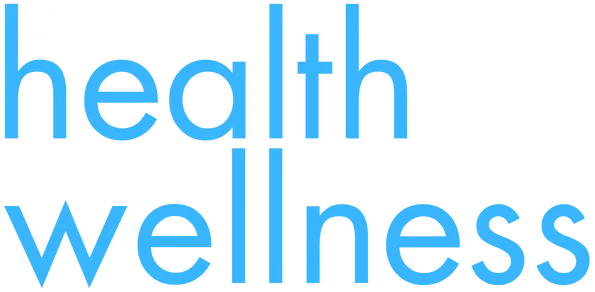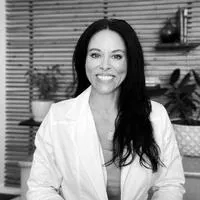

REAL ESTATE ARTICLES

Start a New Pattern in 2025
I love that a clean, fresh page presents itself to us at the beginning of each calendar year and that so many of us are eager to fill it with the things we want to see change in us as we move forward. It is change we want to take on, change from which we anticipate receiving good things. Seeing this desire in others or feeling it in myself absolutely lights me up. The concept of diving in to do the work while looking forward to the future rewards thrills me, and maybe that is part of the reason that I do what I do.
"Over time, we continually use the same neuropathic patterns that have been with us from the beginning of our lives, plugging in new extensions and new versions as we go, and living out different experiences of this same pattern time and time again."
As charged up as I can be about taking on a new challenge and with all of the skills and knowledge I have acquired about how to make an idea become a reality, my successes and my dreams are still largely at the mercy of the thing we are all at the mercy of 90 to 95 percent of the time: our subconscious programs and patterns.
When it comes to deciding to do something new for ourselves, most of us don’t realize that almost all of our thoughts, feelings, and actions actually come from patterns that were engineered into our subconscious programming long before today, and not all of those programs are helpful. Some patterns can make certain goals more difficult to reach than others. Our significant neural pathways and connections develop their roots fully in the brain before we are seven or eight years old. At age fifteen, twenty-five, fifty, or one hundred, these patterns continue to cue our brains about what to think, how to feel, and what action to take, and most of the time, we don’t even realize it.
Of course, it doesn’t look or feel like that to us from our adult perspectives. Over time, we continually use the same neuropathic patterns that have been with us from the beginning of our lives, plugging in new extensions and new versions as we go, and living out different experiences of this same pattern time and time again.
For instance, at the age of five, Jane experienced the divorce of her parents, which caused her to feel displaced and abandoned. To subconsciously gain a sense of control over her situation, she became combative. She also turned her feelings inward and began to bite her nails. Whatever beliefs started to form in her young mind about herself and her situation from the divorce of her parents remained as part of her core belief pattern as she grew.
As Jane aged, these same neural pathways lit up when she ran into anything that made her feel worried about being displaced and abandoned. She used her high-conflict button to control her world, which kept her from forming healthy relationships or maintaining long-term employment. She also continued to bite her nails, even adding a few habits along the way that helped her to cope: drinking and stress eating.
Do disruptive patterns always start because of a traumatic experience, like going through a divorce or being abused? No, not at all. Most negative patterns come from minor disruptive experiences that cause us to interpret something negative about ourselves or our lives: having our mother or father angry at us, feeling unaccepted at school, being teased or bullied, or having doubts about ourselves. All of these types of things can start a core belief pattern that affects us for a lifetime.
When Jane finally decides to manage her emotional eating problem, she will certainly need to know about and commit to healthy eating, daily exercise, and other actionable items she can take to help her successfully reach her goal. But if she has the same pattern running in her subconscious mind—that the best way to deal with stress is with a personal soothing action—eating right will likely always be an uphill battle. She might dot every “I” and cross every “T.” She might see her numbers going down on the scale. But if she hasn’t trained her brain down a better neural pathway, she will always be fighting the urge to take care of her stress with a quick fix, whether it’s food or something else. Approaching change from the outside is going to feel like taxing work from beginning to end.
However, if Jane starts at the other end of the problem and begins to find the “why” of what is causing her to eat when she’s not hungry, she might begin to recognize that in the moments when she feels uncomfortable and thinks she wants a cookie or some chips, she is actually looking for something beyond food; she’s actually looking for a way to sooth the five-year-old girl who feels confused, vulnerable, and abandoned and who simply wants to feel protected. Jane needs to learn a new pattern so that she can subconsciously feel safe enough to react in a new way.
While it is true that Jane doesn’t have to see, heal, and rewrite this subconscious pattern in order to reach her goal, if she does, making the right decisions about food for her body will become more natural and simple for her as a new pattern falls into place.
The more science learns about the brain, the more we know that the old patterns that began long ago are our ultimate sovereigns. They run and run and run undetected by us until we are mindful enough to see them and do the work to rewrite them. And then we have the power.
This year, if you are looking to change, think about change from a new angle. Think about the reasons you do the things you do; recall the emotions that you have regularly experienced around your long-term habits. Then ask yourself, “Where did this first begin?” If you sit with that question long enough, you may be surprised at the possible answers that start to come up.
I guide my clients through this process in hypnotherapy, where we are able to tap into the subconscious mind to remove old programs and explore the root issues of core belief patterns, let them go, and rewrite the old neural pathways to work in a positive new version. This process is workable in other therapy types as well as you unpeel the layers of what has brought the habits you have into your life.
I wish you the best of all things as you go forward in 2025. May all of your changes begin healthy new patterns for you.

